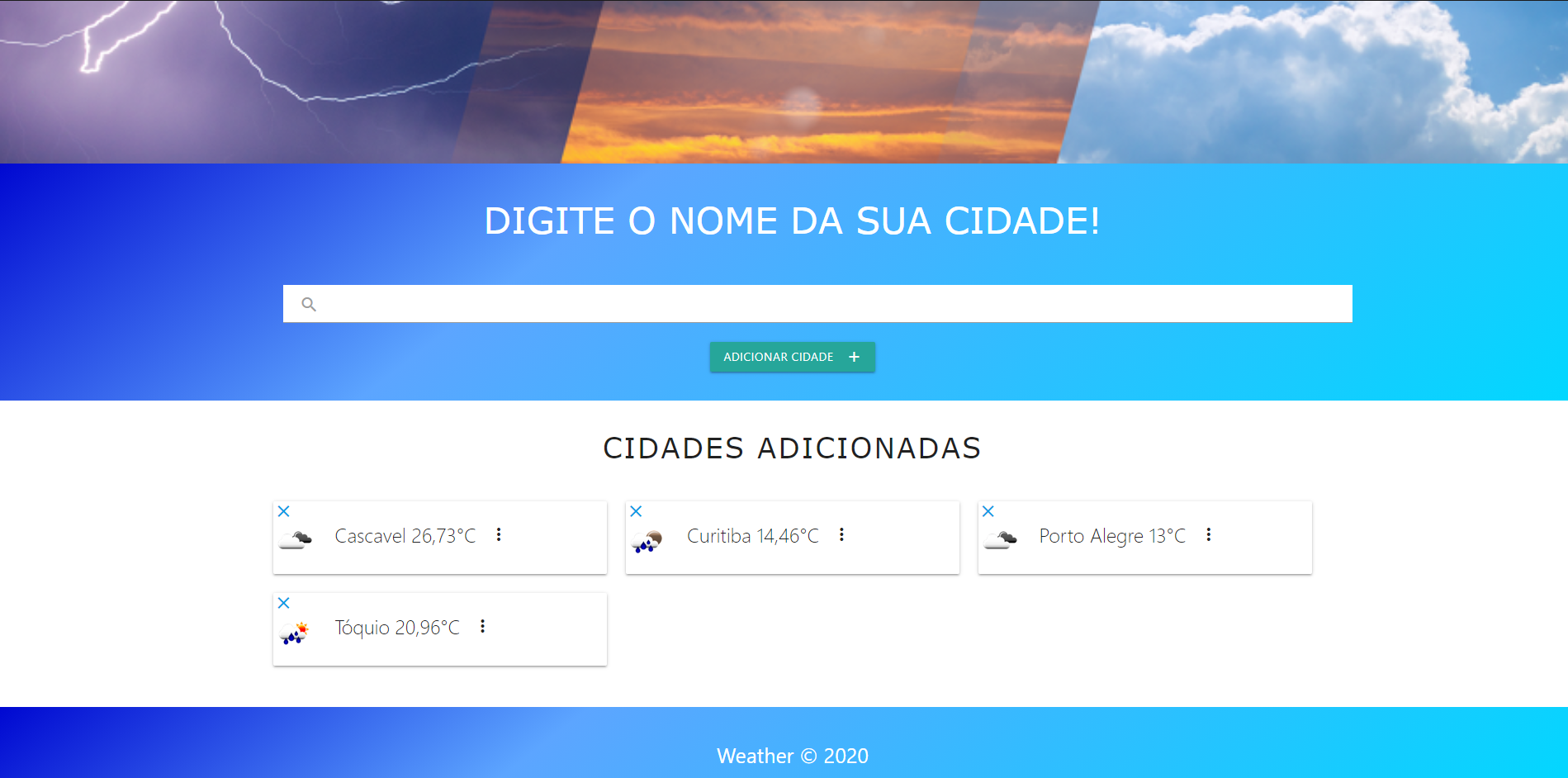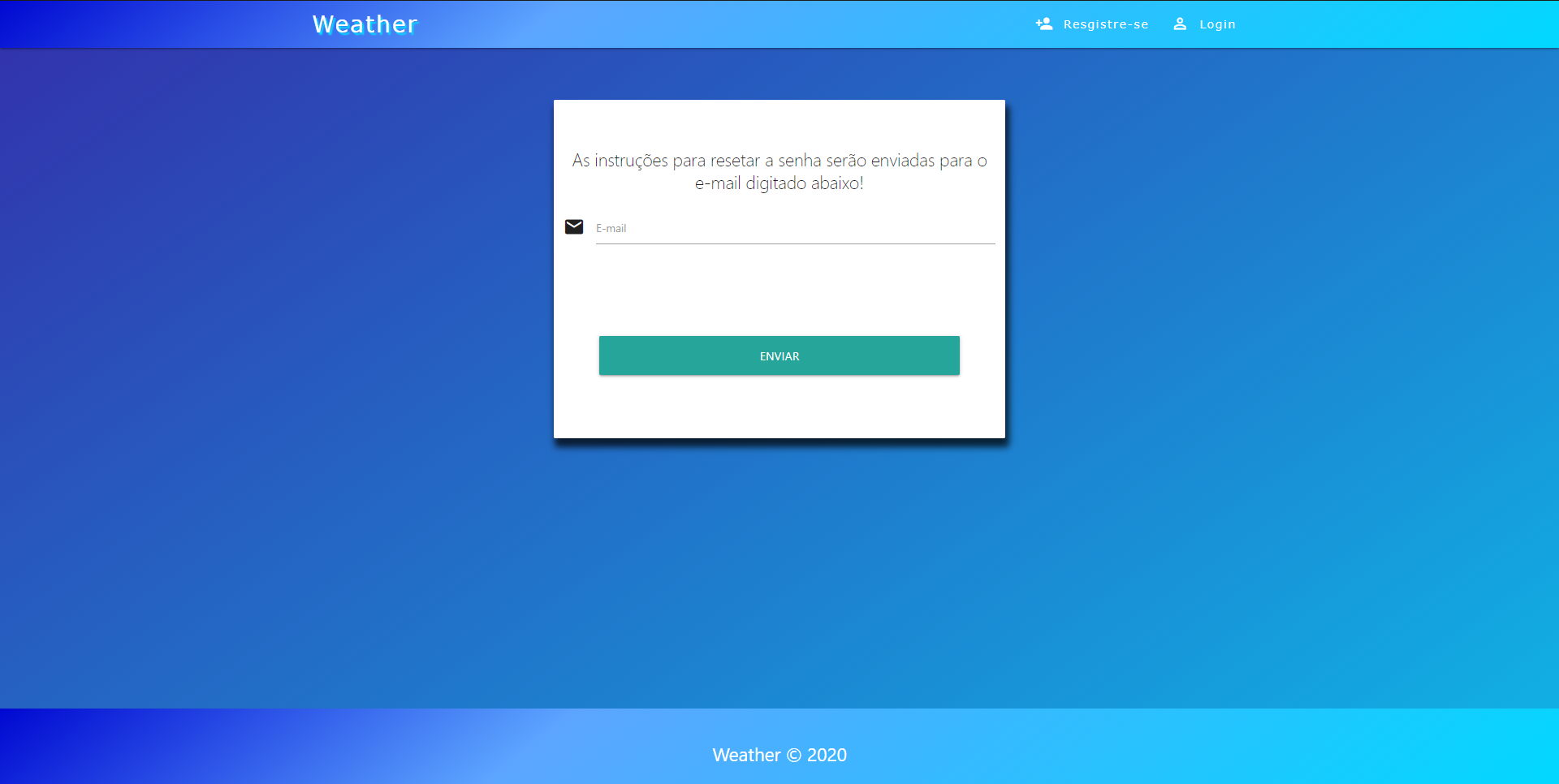See preview here: https://weather-app-service1.herokuapp.com/
Find yourself here
Weather app consuming Open Weather api with user authentication, the goal of this project is shows weather forecast to anywhere around the world.
- PostgreSQL
- Python
- Django framework(function-based-views)
- HTML5
- CSS3
- Materialize css
- SASS
- username
- password
- confirm password
- it is possible to authenticate the user using username and password
- You can recover your access typing your e-mail used when you register
- You can add as many cities as you like to know the daily weather forecast like minimum temperature, maximum temperature, atmospheric pressure, humidity and wind speed
git clone https://github.com/GiovannaK/Weather-app-django.gitpython -m venv venv
venv\Scripts\activate.bat
python -m pip install --upgrade pip setuptools wheel --user
pip install -r requirements.txt
python manage.py migratepython3 -m venv venv
. venv/bin/activate
pip install -r requirements.txt
python manage.py migratepython -m venv venv
. venv/bin/activate
pip install -r requirements.txt
python manage.py migrateDATABASES = {
'default': {
'ENGINE': 'django.db.backends.postgresql_psycopg2',
'NAME': 'db_name',
'USER': 'name',
'PASSWORD': '',
'HOST': 'localhost',
'PORT': '',
}
}S3 bucket was used to store static files and images you can create an account in AWS, create a bucket and setup the credentials in settings.py
AWS_ACCESS_KEY_ID = config('AWS_ACCESS_KEY_ID')
AWS_SECRET_ACCESS_KEY = config('AWS_SECRET_ACCESS_KEY')
AWS_STORAGE_BUCKET_NAME = config('AWS_STORAGE_BUCKET_NAME')
AWS_S3_FILE_OVERWRITE = False
AWS_DEFAULT_ACL = None
DEFAULT_FILE_STORAGE = 'storages.backends.s3boto3.S3Boto3Storage'
STATICFILES_STORAGE = 'storages.backends.s3boto3.S3Boto3Storage'
STATIC_URL = 'http://' + AWS_STORAGE_BUCKET_NAME + '.s3.amazonaws.com/'
ADMIN_MEDIA_PREFIX = STATIC_URL + 'admin/'If you don't want to use the S3 bucket, delete the credentials, remove ADMIN_MEDIA_PREFIX and change STATIC_URL to
STATIC_URL = '/static/'python manage.py migratepython manage.py createsuperuserpython manage.py runserverMIT License
Copyright (c) [2020]
Permission is hereby granted, free of charge, to any person obtaining a copy of this software and associated documentation files (the "Software"), to deal in the Software without restriction, including without limitation the rights to use, copy, modify, merge, publish, distribute, sublicense, and/or sell copies of the Software, and to permit persons to whom the Software is furnished to do so, subject to the following conditions:
The above copyright notice and this permission notice shall be included in all copies or substantial portions of the Software.
THE SOFTWARE IS PROVIDED "AS IS", WITHOUT WARRANTY OF ANY KIND, EXPRESS OR IMPLIED, INCLUDING BUT NOT LIMITED TO THE WARRANTIES OF MERCHANTABILITY, FITNESS FOR A PARTICULAR PURPOSE AND NONINFRINGEMENT. IN NO EVENT SHALL THE AUTHORS OR COPYRIGHT HOLDERS BE LIABLE FOR ANY CLAIM, DAMAGES OR OTHER LIABILITY, WHETHER IN AN ACTION OF CONTRACT, TORT OR OTHERWISE, ARISING FROM, OUT OF OR IN CONNECTION WITH THE SOFTWARE OR THE USE OR OTHER DEALINGS IN THE SOFTWARE.
- Linkedin - Giovanna Cunha




